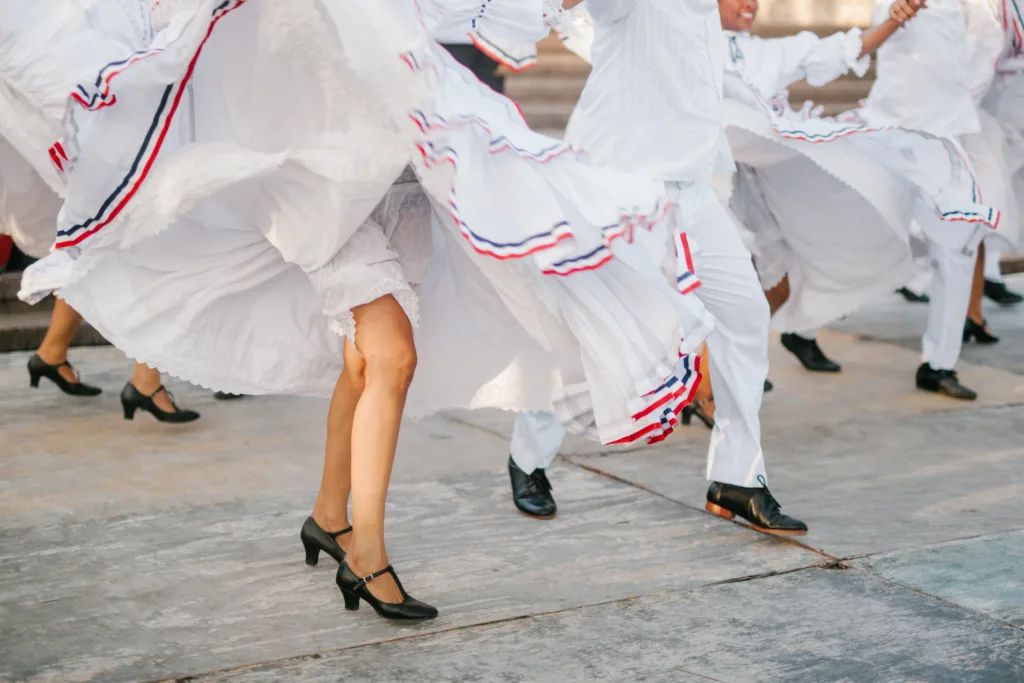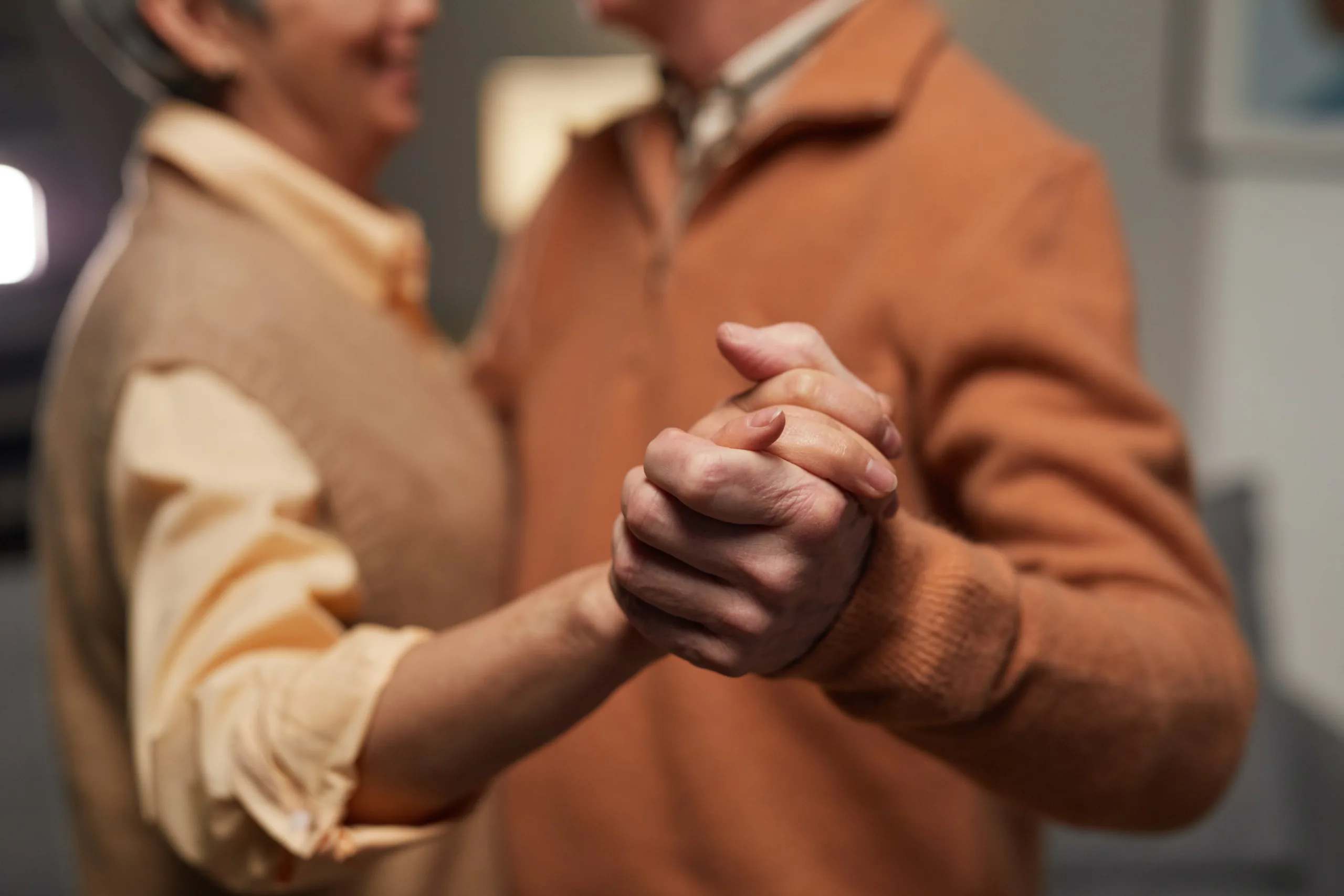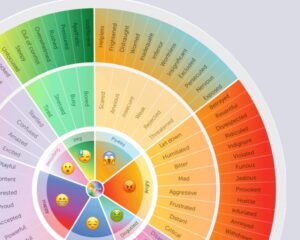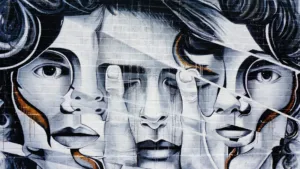Dance, often seen as a form of entertainment or exercise, is an art that transcends physical boundaries.
Beyond its undeniable physical benefits, the advantages of world dance are gaining recognition in the realm of mental health and well-being.
In this article, we delve into the transformative power of world dance and how it can heal not only your body but also your mind, heart, and soul.
Table of Contents
Acceptance: Embracing Diversity Of World Dance
One remarkable aspect of world dance is its celebration of diversity and the beauty of individuality.
Unlike some fitness regimens that dictate a specific body type, global dance styles embrace people of all shapes and sizes.
As individuals immerse themselves in various dance forms, they often report an increased acceptance and appreciation for their own bodies and true selves.
This journey toward self-acceptance can be a powerful antidote to issues like low self-esteem and body image concerns.
Achieving Goals and Accomplishments Through World Dance
Dance knows no boundaries when it comes to ability levels or learning styles.
Whether you’re a novice or a seasoned dancer, the art of dance offers the opportunity to set and achieve goals.
Mastering a new dance move or perfecting a complex choreography sequence can provide a profound sense of accomplishment.
This feeling of achievement can translate into increased self-confidence and a more positive self-image.

Creativity: Expression Through Artistry
In our daily lives filled with routines and responsibilities, we often yearn for a creative outlet. Dance provides the perfect canvas for artistic expression.
Whether it’s the freedom to move your body in a spontaneous dance or crafting intricate choreography, dance allows individuals to embrace their unique creativity.
Fusion dance, in particular, offers a rich palette of global elements to weave into a unique and expressive art form.
Culture: Connecting to Heritage and Diversity
World dance offers a dual benefit in the realm of culture.
Engaging in a dance style that connects to one’s cultural heritage allows individuals to embrace their roots, reconnect with childhood memories, and honor their values.
Additionally, participating in world dance styles from other cultures promotes awareness, understanding, and sensitivity, making it a fun way to expand your knowledge of cultures worldwide.
Expressing Through Movement
When words fail us, dance becomes a powerful means of expression. World dance serves as a safe and cathartic outlet for releasing pent-up emotions.
Whether it involves taking on a character’s persona or simply letting your body move freely, dance allows individuals to explore and express complex feelings they may not be comfortable addressing through words alone.
Happiness: Joy Through Dance
Dancers often attest to the pure joy they experience while dancing. It’s no surprise that dance can improve sentiments of hope and happiness. Moreover, it can be a potent tool in combatting depression and anxiety.
The act of dancing, combined with the camaraderie of a dance community, can uplift spirits and provide a sense of belonging.

Healing: The Mind-Body Connection
The connection between physical and mental health is undeniable. Dance intertwines the mind and body, and as individuals experience physical improvements, their mental health often follows suit.
Enhanced physical attributes like agility and flexibility contribute to improved self-perception, ultimately boosting mental well-being.
Furthermore, dance serves as a therapeutic outlet, allowing individuals to reflect, connect, and release personal turmoil.
Social Support: Building Connections
Many world dance styles are taught in group settings, fostering a sense of kinship among participants. Shared spaces, common goals, and collective experiences strengthen the bonds between dancers.
This supportive environment not only enhances the dance experience but also contributes to a sense of belonging and emotional well-being.
Stress Relief: A Mental Escape
In our fast-paced lives, stress is a constant companion.
Dance provides a valuable mental escape, allowing individuals to set aside their daily responsibilities and focus on their minds and bodies.
World dance classes offer a sanctuary where individuals can release tension through emotional and physical means, promoting overall mental relaxation.
Let’s Wrap Up
World dance is more than just a physical activity; it’s a transformative journey for the mind, heart, and soul.
From promoting self-acceptance and achievement to fostering creativity and cultural awareness, the healing power of world dance is a realm that deserves recognition.
As you embark on your dance journey, remember that it’s not just your body that will benefit but your mental health and well-being as well.
So, put on those dancing shoes and let the world of dance be your path to holistic healing and self-discovery.
References
Capello, P. (2008). Dance/movement therapy with children throughout the world. American Journal of Dance Therapy, 30(1), 24–36. doi:10.1007/s10465-008-9045-z
Hwang, P. W., & Braun, K. L. (2015). The effectiveness of dance interventions to improve older adults’ health: A systematic literature review. Alternative Therapies in Health & Medicine, 21(5), 64-70.
Keogh, J. L., Kilding, A., Pidgeon, P., Ashley, L., & Gillis, D. (2009). Physical benefits of dancing for healthy older adults: A review. Journal of Aging and Physical Activity, 17(4), 479-500.
The effects of long-term aerobic dance on agility and flexibility. (1999). Journal of Sports Medicine and Physical Fitness, 39(2), 165-168.
Min Jeong, K., & Chul Won, L. (2016). Health benefits of dancing activity among Korean middle-aged women. International Journal of Qualitative Studies on Health & Well-Being, 11, 1-7 doi:10.3402/qhw.v11.31215
Olivier A., C., Stéphanie, D., Virginie, L., Pauline, L., & Lena, F. (2011). Practice of contemporary dance improves cognitive flexibility in aging. Frontiers in Aging Neuroscience, 3(13), doi:10.3389/fnagi.2011.00013/full
Ali, S., Cushey, K., & Siqqiui, A. (2016). Diversity and dance: Exploring the therapeutic implications of world dance. Journal of Creativity in Mental Health, 12(1), 31-47.
Acharya, C., & Jain, M. (2017). Psychological well-being and self-esteem: A study on Indian classical dancers. Indian Journal of Positive Psychology, 8(3), 389-391.
Dankworth, L. E., & David, A. R. (2014). Dance ethnography and global perspectives. [electronic resource] : identity, embodiment and culture. Houndmills, Basingstoke, Hampshire; New York : Palgrave Macmillan 2014.
Saito, K. (2006). The benefits of Japanese dance from a psychosomatic medical perspective. International Congress Series, 1287(Psychosomatic Medicine Proceedings of the 18th World Congress on Psychosomatic Medicine, held in Kobe, Japan, between 21 and 26 August 2005), 316-317. doi:10.1016/j.ics.2005.11.127
Heber, L. (1993). Dance movement: A therapeutic program for psychiatric clients. Perspectives in Psychiatric Care, 29(2), 22–29. doi:10.1111/j.1744-6163.1993.tb00408.x
Lakes, K. D., Marvin, S., Rowley, J., Nicolas, M. S., Arastoo, S., Viray, L., & … Jurnak, F. (2016). Dancer perceptions of the cognitive, social, emotional, and physical benefits of modern styles of partnered dancing. Complementary Therapies in Medicine, 26,117-122. doi:10.1016/j.ctim.2016.03.007
Lakes, Kimberley. Complementary Therapies in Medicine Volume: 26 Issue 1 (2016) ISSN: 0965-2299 Online ISSN: 1873-6963
Koch, S., Kunz, T., Lykou, S., & Cruz, R. (2014). Effects of dance movement therapy and dance on health-related psychological outcomes: A meta-analysis. The Arts in Psychotherapy, 41(1), 46–64. doi:10.1016/j.aip.2013.10.004
Muro, A., & Artero, N. (2017). Dance practice and well-being correlates in young women. Women & Health, 57(10), 1193-1203.




